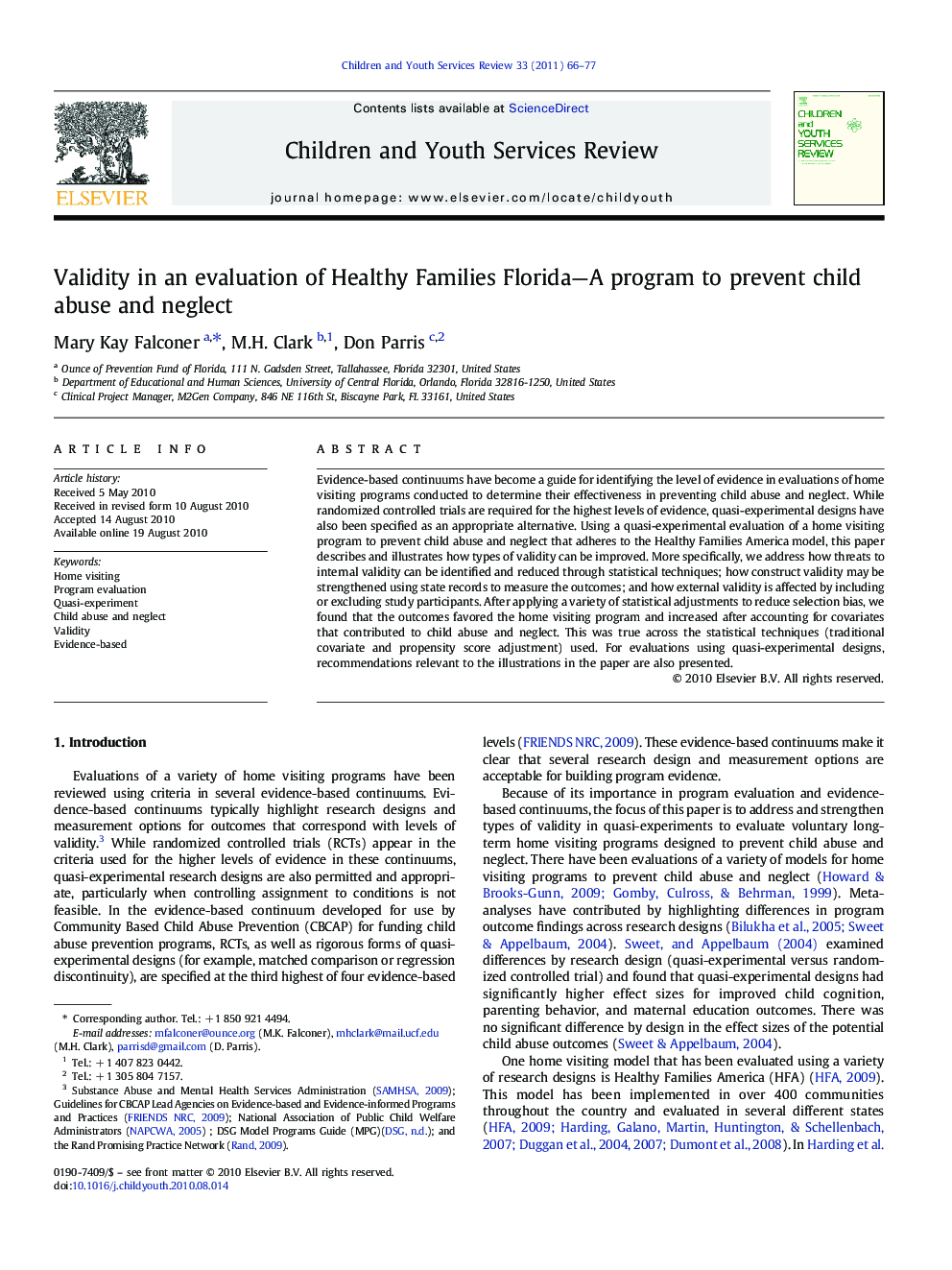| Article ID | Journal | Published Year | Pages | File Type |
|---|---|---|---|---|
| 347444 | Children and Youth Services Review | 2011 | 12 Pages |
Evidence-based continuums have become a guide for identifying the level of evidence in evaluations of home visiting programs conducted to determine their effectiveness in preventing child abuse and neglect. While randomized controlled trials are required for the highest levels of evidence, quasi-experimental designs have also been specified as an appropriate alternative. Using a quasi-experimental evaluation of a home visiting program to prevent child abuse and neglect that adheres to the Healthy Families America model, this paper describes and illustrates how types of validity can be improved. More specifically, we address how threats to internal validity can be identified and reduced through statistical techniques; how construct validity may be strengthened using state records to measure the outcomes; and how external validity is affected by including or excluding study participants. After applying a variety of statistical adjustments to reduce selection bias, we found that the outcomes favored the home visiting program and increased after accounting for covariates that contributed to child abuse and neglect. This was true across the statistical techniques (traditional covariate and propensity score adjustment) used. For evaluations using quasi-experimental designs, recommendations relevant to the illustrations in the paper are also presented.
